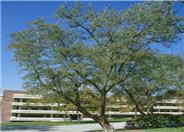
Common name:Olive, Edible Olive
Botanical name:Olea europaea
This broad tree will slowly grow to 20'-30' tall and wide. It has small, grey-green, evergreen leaves. Small white fragrant flowers bloom in spring, followed by fleshy black fruit that appears in fall. Fruit is messy and can stain sidewalks. There are cultivars that do not produce fruit. Some folks are allergic to the blooms. This tree is very long lived, with a beautiful gnarled trunk. It prefers full sun and low watering in summer months (twice a month) and none during the winter, when established.
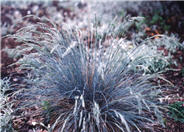
Common name:Large Blue Fescue, Tufted Fescue
Botanical name:Festuca amethystina 'Superba'
'Superba' is a hardy fescue with finely textured blue-green foliage that grows 8"-12' tall. It has spring flowers with tan spikes and purple tones that are 12" above the foliage .This fescue is a very showy, neat grass for sunny well draining spots. It prefers regular watering. This lovely ground cover is great in dry creek beds and borders.
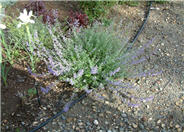
Common name:Catmint
Botanical name:Nepeta X faassenii
Nepeta faassenii makes soft, grey-green, undulating mounds to 1.5' high in bloom, spreading 3'-4' wide. The small leaves are attractive to cats. This perennial has lavender blue flowers in summer. Catmint can be planted in sun or shade and needs medium amount of water. Prune spent flowers to encourage more blooms.
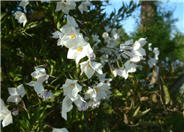
Common name:Potatoe Vine
Botanical name:Solanum laxum
This twisting vine will grow 25' in length and has deciduous, glossy green leaves with blue and white flowers that are in constant bloom.
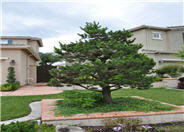
Common name:Japanese Black Pine
Botanical name:Pinus thunbergii
This variety of pine is both rigid and twisted, with needles of 3"-4". It has an irregular shape, and the short, contorted branches produce a canopy-shaped tree. The buds are white, and the cones are egg-shaped and without prickles.
More than half of the water used at your home is for outside purposes. Studies show that on average, half of the water used outdoors is wasted. The leading cause of waste is incorrectly set and poorly managed irrigation controllers. The second biggest cause of wastage is broken irrigation equipment that goes undetected. There are a few basic things you can do to make a big difference in your water use.
Click in the green box for more information
Click in the green box for more information
Designer: Jeff Gamboni Landscape Archite
Photographer: GardenSoft
Maintain a two to four inch layer of mulch on the soil surface to reduce weeds, infiltrate rain water, and reduce compaction.
Develop healthy soil for plants that are vigorous and naturally pest-resistant.